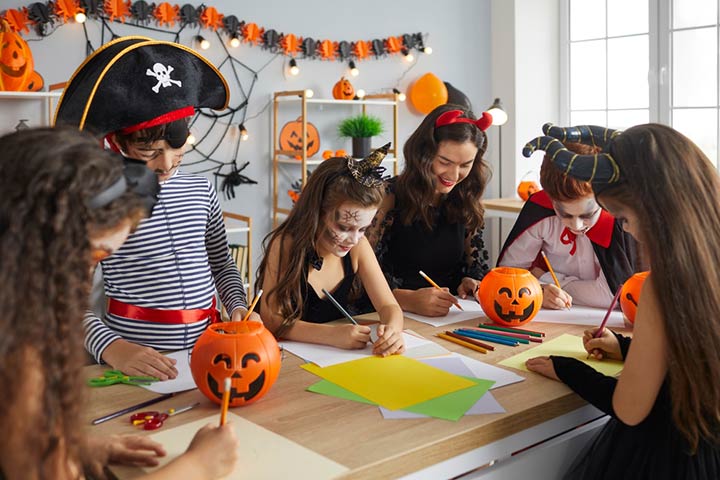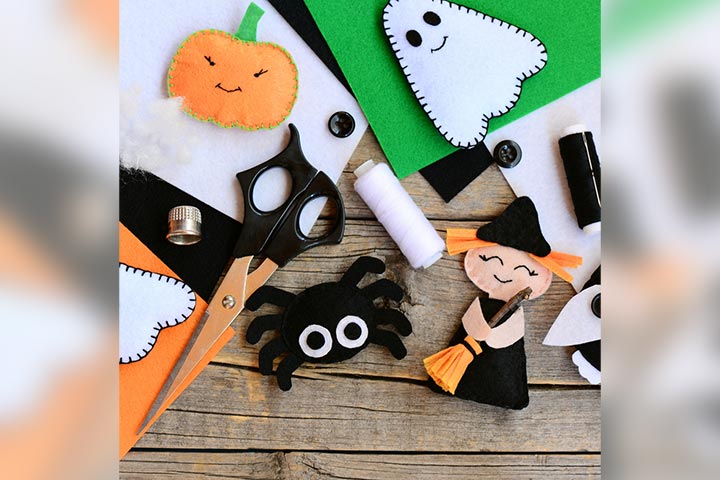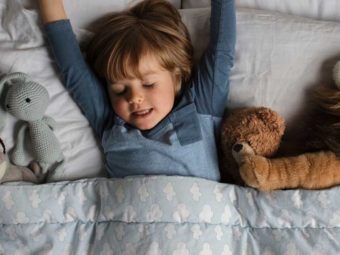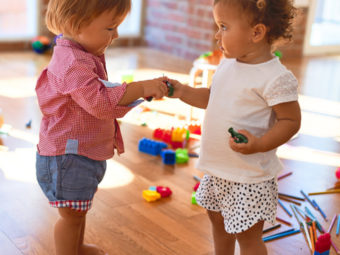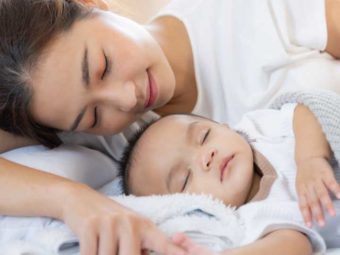
图片:推特
Halloween is around the corner and you have probably already started doing your preparations. From the spooky costumes and decorations to the delicious food items, how can one not be excited for it to arrive fast? Halloween is such a fun holiday! If you’re looking for ways to celebrate Halloween with your little one, then you must be thinking of how to spend some time doing some fun activities with your little one. Our suggestion– make a sensory bottle together. Why? Because sensory bottles are brilliant objects and your child will absolutely love them. It helps that your kid won’t be making a mess while playing with these wonders too! Also, by making your own sensory bottle, you can customize it in such a way that it has elements of Halloween written all over it. They’re easy to make, fun to play with, and helpful when it comes to the development of your bundle of joy!
Engaging in craft activities lets kids utilize their creative side which is really good for their development too. So, let’s look into what these are and how you can make your very own Halloween-themed sensory bottles
Sensory Bottle? What’s That?
Image: Shutterstock
You’ve probably heard of sensory bottles or the other names it goes by: sensory bins, sensory bags, calm down jars, or discovery bottles. Or maybe you haven’t heard of it all! It’s a good thing you’re here then because sensory bottles aren’t just a fun plaything for your kid. It’s an intelligent way for your child to enjoy non-messy play while being fascinated and safe.
What’s excellent about sensory bottles is that they play a good role in your child’s development. If you’re wondering how a toy can contribute to any development whatsoever, here’s how(1)(2):
- They come in different shapes and sizes, thereby introducing your child to the concept of space, shapes, perception, and spatial understanding..
- While playing with sensory bottles, kids are often encouraged to describe what they see inside or how it feels. This contributes to language development.
- Sensory bottles help with fine motor development, as the child will turn the object around, shake it, and manipulate it while playing.
- While playing with sensory bottles, your child is also introduced to the concept of mathematics and science. They begin to question the science behind floating objects, why measurement is essential, and more.
- Sensory bottles also contribute to their social skills. While your child is engaged in sensory play, they are expected to share the bottles with their peers, as well as learn and share what they think about it.
Sensory bottles are great for children, especially for those who are neurodiverse and differently-abled. Studies have shown that sensory stimulation in the form of sensory bags and bottles should be provided as a part of therapy for those who struggle with different forms of Dementia or Alzheimer’s. It has been observed that these objects can reduce the amount of restlessness and agitation they feel, and improve the quality of sleep (3).
Make Your Own Halloween Sensory Bottles!
Image: Shutterstock
Now that you know sensory bottles are great for your child to play with and contribute to their overall development, let’s get started on making your own. Considering that it’s almost Halloween, you could make a few that revolve around this festive holiday. Here’s what you can do:
Jack-O’Lantern Sensory Bottle
Image: Shutterstock
What’s Halloween without Jack-O’Lantern? For this one, you’ll have to:
- Take an empty, transparent bottle. Fill half of it with water and add half a cup of glue to it.
- You will then have to add fine orange glitter to the water and a few drops of orange watercolor
- You can then fill the bottle with a little more water, leaving a space of half an inch from the top.
- Secure the bottle with the lid — make sure you use strong adhesive or hot glue so the water doesn’t spill out no matter how much your child shakes it.
- Use black paper to cut out the eyes and mouth, and stick this on the outside of the bottle. Your Jack-O-Lantern sensory bottle is all done!
Frankenstein Sensory Bottle
Image: Shutterstock
Frankenstein is synonymous with Halloween and would be a great choice for a sensory bottle theme. All you need to do is follow the same basic steps we mentioned above — take an empty bottle, fill half of it with water. To add in elements of Frankenstein:
- Add a few drops of green food coloring or watercolor and silver or green glitter.
- Secure the bottle.
- Cut a piece of foam for the hair and stick it around the top of the bottle.
- Add googly eyes and use a sharpie to draw the mouth with stitches. It is best to use a permanent marker for this.
Witches Sensory Bottle
Image: Shutterstock
This one is a favorite! Follow the same steps above, but add a dark blue or purple food color to the water. You can then add tiny spooky items into the bottle, too, such as plastic bones, plastic spiders, and little plastic cats. Throw in some silver glitter into the bottle before securing it. You can cut out a witch’s hat for the bottle cap, and it’s done!
Having gone through this article, we are sure you are already excited to get started with making a sensory bottle, one that bears your and your child’s personal touch to it. You can use them for decorating your place. Make sure to keep them someplace safe as memorabilia. And next year you can take it out and use it. You can compare that year’s craftwork you do with your current one. Your child will easily be able to spot the improvements he/she gained from the experience.
These sensory bottles are perfect for Halloween, and we’re sure your little ones will love them! You can also involve them while making these bottles. Which one did you like the most? Do you have more creative ways to make your own Halloween sensory bottles? Let us know in the comments below!
References:
- Parent Reports of Sensory Experiences of Preschool Children With and Without Autism: A Qualitative Study
https://www.ncbi.nlm.nih.gov/pmc/articles/PMC2682212/ - 感觉综合干预措施的有效性in Children With Autism Spectrum Disorders: A Pilot Study
https://www.ncbi.nlm.nih.gov/pmc/articles/PMC3708964/


